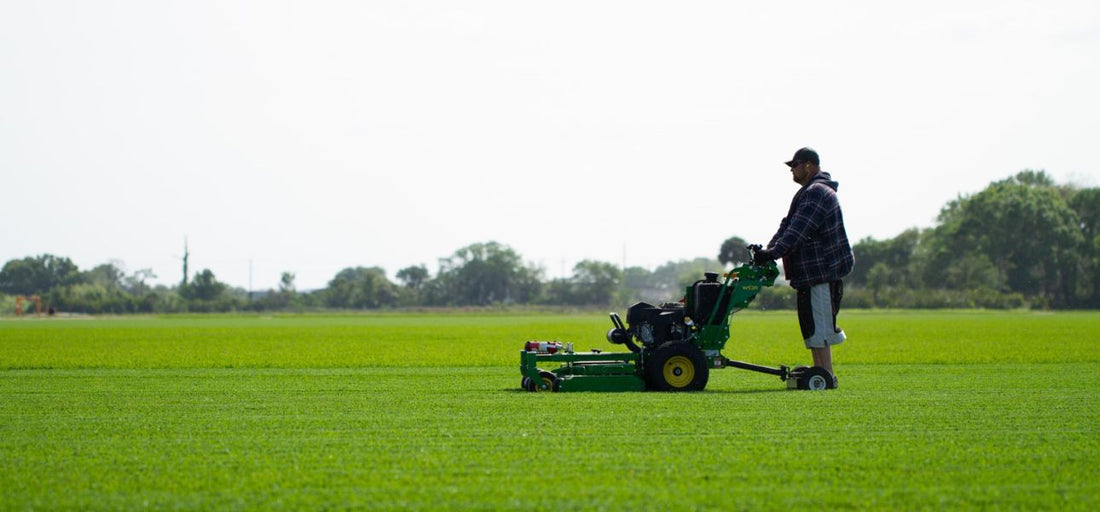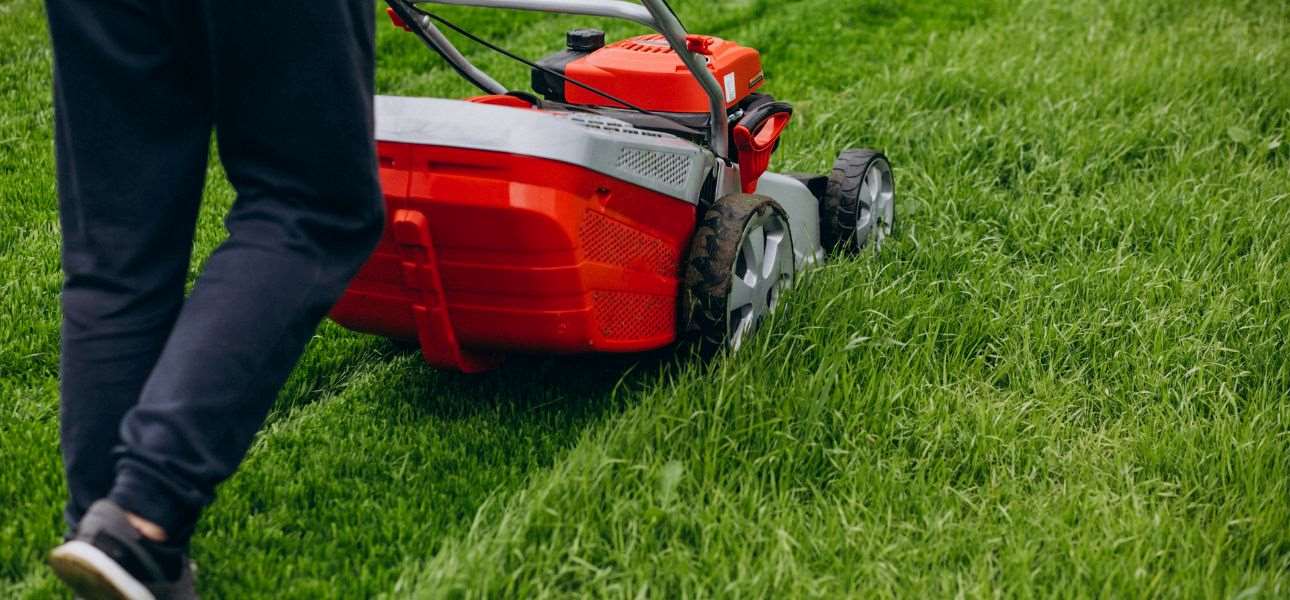
Avoid These 9 Lawn Care Mistakes When Mowing Your Lawn
Jamie TedderGiven how often you have to mow your lawn, many homeowners find it more sensible to mow it themselves instead of hiring someone to do the job. This is particularly true during the active grass growing season.
Regular mowing is key to a neat and healthy lawn. It encourages deep, dense root development that boosts resilience to heat, drought, and other stresses. However, if the grass looks greener on the other side of the fence, you might be guilty of making one of these common mowing mistakes.
9 Lawn Mowing Mistakes Homeowners Make
While mowing seems straightforward, avoiding these errors can make a significant difference in your lawn. Read on as Bethel Farms, one of the leading sod farms in Central Florida, shares practices that could be costing you a lush, green lawn.
1. Using the Wrong Mower
Mowers come in various types, each cut out for different lawn sizes and grass types. Using a mower that is too small or underpowered for your lawn can result in an uneven cut, missed spots, and increased wear on the equipment.
Meanwhile, using a mower that is too large or powerful can scalp the lawn, damaging the grass and leading to bare patches where unwanted weeds may grow. When shopping for a mower, consider the one appropriate for your lawn size, terrain, and how many trees or shrubs you have to maneuver around.
2. Running the Mower Too Fast or Too Slow
It's a common belief that running a riding lawn mower at full speed can damage the engine, shortening the lifespan of the equipment. However, this isn't always the case. Riding mowers are designed to operate at an optimal blade tip speed, and cutting at full speed often results in a more even and better cut.
While running the mower at full speed is generally fine, rushing through the mowing process is not advisable either. It can result in uneven grass cutting, missed spots, and clumping, potentially leaving it looking messier than before cutting.
3. Mowing with Dull Blades
A sharp mower blade is key to a well-groomed, clean-cut lawn. Dull mower blades can tear the grass instead of cutting it cleanly, making your lawn open to pests and diseases.
Sharpen your blades every few months to ensure a clean cut. When the grass looks ragged and torn after mowing, you'll know it's time to do so.
4. Mowing Wet Grass
Mowing wet grass after irrigation or rainfall is generally not recommended for several reasons. Wet grass tends to clump together and mat down, resulting in an uneven cut. Wet grass clippings can also clog the mower, potentially causing damage in the long run.
Additionally, mowing the lawn when wet can spread fungi that may be present, leading to infestations. Most importantly, wet grass makes the lawn surface slippery, creating a safety hazard, particularly when using the mower on the slopes in your yard. It's generally best to wait until the grass is dry before mowing to ensure a safe and clean cut.

5. Mowing Too Often or Not Often Enough
While there's no set number of days between mowing your grass, aim to keep it at an optimal length. Warm-season grasses like Bermuda, Zoysia, and St. Augustine, which are common in Florida, thrive when maintained at 2-2.5 inches or a maximum of three inches.
These grasses grow most vigorously from late spring through early fall, often requiring weekly mowing. However, less frequent mowing may be necessary during colder months when the grass may be dormant. Instead of following a strict schedule, adjust your mowing frequency based on the rate your grass grows. Here’s a comprehensive guide on how often you should mow your lawn.
6. Cutting the Grass Too Short
Also called scalping, cutting your grass too short leaves your lawn more susceptible to weeds and less resilient to environmental stresses. It is because when the grass is cut too short, it focuses its energy on regrowing its blades instead of deepening its roots, resulting in weaker grass that is less able to withstand adverse conditions, including heat and drought.
Avoid this by adhering to the one-third rule—never remove more than one-third of the grass blade length at a time. If your grass has grown too long, adjust your lawn mower blade to the highest possible setting to reduce its height over multiple sessions to avoid scalping. Allow the grass to recover for 3-4 days between mowings.
7. Mowing in the Same Direction Every Time
Mowing the grass repeatedly in the same direction causes the blades to lean in that direction, leading to bent growth that looks uneven.
Avoid this by varying your mowing pattern regularly. Alternating the direction each time you mow encourages the grass to grow upright, ensuring a more uniform appearance. It will also help prevent the formation of ruts from the lawn mower wheels, which can damage the lawn grass.
8. Bagging Grass Clippings
In past decades, the standard practice was to bag grass clippings and add them to the compost pile, as mulching them was thought to contribute to thatch buildup. However, this is far from the truth.
Lawn clippings decompose quickly and provide benefits that far outweigh the perceived disadvantages of mulching them. This practice restores nutrients and adds organic matter to the soil. It also increases moisture retention in the soil and effectively suppresses weeds. It improves your soil structure while saving you some maintenance work.
9. Mowing Newly Installed Sod
Mowing too soon after laying sod can be detrimental to its establishment. The tender grass blades of newly installed sod are not yet firmly rooted in the soil and can be easily dislodged by the lawn mower blades. This can result in the undoing of your hard work of sod installation.
Avoid damaging the sod by allowing it enough time to establish a strong root system before mowing. We recommend waiting at least 2-3 weeks after installing the sod before mowing. Additionally, ensure your lawn mower blades are sharp to make clean cuts and minimize stress on the grass blades.

Final Tips
Following these lawn mowing tips will help you avoid common lawn care mistakes and nurture a denser, healthier lawn. While it may seem counterintuitive, mowing aids in thickening your grass. Each blade tip has hormones that suppress horizontal growth. You remove these tips when you mow, allowing the grass to spread and grow thicker.
For high-quality grass for sale in Florida, Bethel Farms is a trusted provider offering a wide range of warm-season grass varieties for sod installation and grass plugging.
Visit our website to explore our products and kickstart your journey to a healthy lawn.
